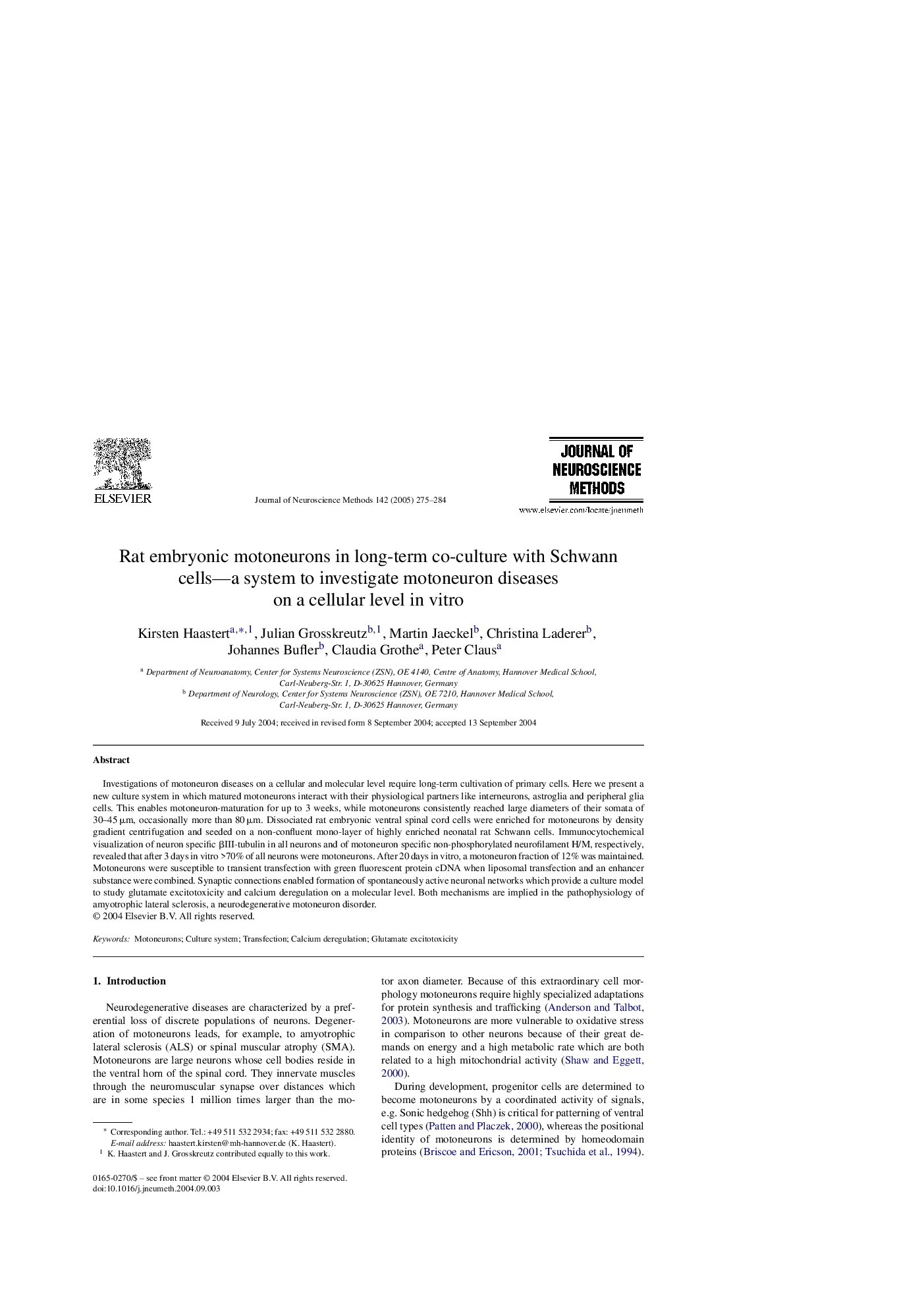| Article ID | Journal | Published Year | Pages | File Type |
|---|---|---|---|---|
| 9424347 | Journal of Neuroscience Methods | 2005 | 10 Pages |
Abstract
Investigations of motoneuron diseases on a cellular and molecular level require long-term cultivation of primary cells. Here we present a new culture system in which matured motoneurons interact with their physiological partners like interneurons, astroglia and peripheral glia cells. This enables motoneuron-maturation for up to 3 weeks, while motoneurons consistently reached large diameters of their somata of 30-45 μm, occasionally more than 80 μm. Dissociated rat embryonic ventral spinal cord cells were enriched for motoneurons by density gradient centrifugation and seeded on a non-confluent mono-layer of highly enriched neonatal rat Schwann cells. Immunocytochemical visualization of neuron specific βIII-tubulin in all neurons and of motoneuron specific non-phosphorylated neurofilament H/M, respectively, revealed that after 3 days in vitro >70% of all neurons were motoneurons. After 20 days in vitro, a motoneuron fraction of 12% was maintained. Motoneurons were susceptible to transient transfection with green fluorescent protein cDNA when liposomal transfection and an enhancer substance were combined. Synaptic connections enabled formation of spontaneously active neuronal networks which provide a culture model to study glutamate excitotoxicity and calcium deregulation on a molecular level. Both mechanisms are implied in the pathophysiology of amyotrophic lateral sclerosis, a neurodegenerative motoneuron disorder.
Related Topics
Life Sciences
Neuroscience
Neuroscience (General)
Authors
Kirsten Haastert, Julian Grosskreutz, Martin Jaeckel, Christina Laderer, Johannes Bufler, Claudia Grothe, Peter Claus,
